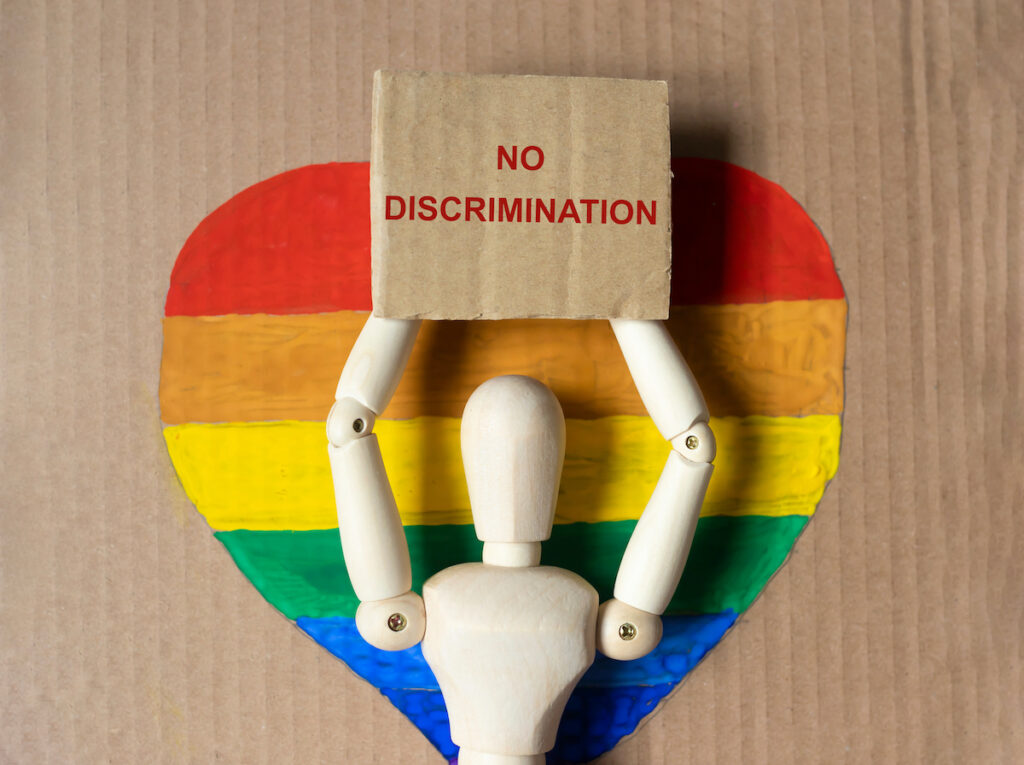
Suicide is the second leading cause of death amongst young people aged 15-29. Amongst this young population, lesbian, gay, and bi young people are estimated to be around 3 times more likely than their heterosexual peers to think about and attempt suicide (IOM, 2011; Marshal et al., 2011). We know less about trans and cisgender young people’s suicidal thoughts and attempts primarily because this data is not systematically collected (IOM, 2011; Connolly et al., 2016; Toomey, Syvertsen and Shramko, 2018; Rimes et al., 2019; Surace et al., 2020). Similarly, there is on-going concern about high rates of self-harm amongst LGBTQ+ young people (Liu et al., 2019). All in all, given the heightened prevalence of suicidal thoughts, attempts and self-harm amongst LGBTQ+ young people when compared to their cisgender, heterosexual peers, it is clear that we need better understandings of the factors contributing to this disparity.
As discussed in Talen Wright’s recent blog, Ilan Meyer’s minority stress model has been used as one of the primary explanations for mental health disparities between LGBTQ+ and cisgender, heterosexual youths (2003). Meyer argued that in addition to the day-to-day stresses that everyone experiences, lesbian, gay, and bisexual people might experience specific homophobic or biphobic stresses that result in poorer health outcomes than their heterosexual counterparts.
In the paper summarised in this blog, Williams et al. (2021) aimed to extend existing research. Firstly, they observed that although previous researchers had analysed self-harm or suicide, they had not looked at these factors together. Secondly, they argued that existing research appeared to explore either the experiences of LGBQ (or ‘sexual minority’) people or trans and gender non-conforming (TGNC) people and as a result had not been able to undertake inter-group comparisons. In this paper, therefore, the researchers drew together these bodies of work, systematically reviewing papers detailing all risk factors found to be associated with self-harm and suicide amongst LGBTQ+ youths.

In self-harm and suicide research, LGBQ+ and TGNC young people are often explored as separate groups, which hampers comparison; this study by Williams and colleagues (2021) seeks to address this disconnect.
Methods
The authors searched MEDLINE, Scopus, EMBASE, PsycINFO and Web of Science for papers examining risk factors for suicide and self-harm amongst LGBTQ+ youths aged 12-25. They included quantitative papers and mixed-methods studies where there was relevant, extractable, quantitative work, published in English; the search was for all papers published before the final update search on the 31st January 2020.
Although 104 papers were identified, reporting on 102 studies, due to the availability of numerical data, only 40 of the eligible 104 papers were able to be included in the meta-analysis. These studies primarily related to two risk factors for suicide and self-harm: (i) victimisation; and (ii) mental health difficulties. With these two risk factors this study aimed to:
- Examine the prevalence of mental health difficulties and victimisation amongst LGBTQ+ youths with experience of suicidal ideations, suicide attempts or self-harm
- Examine whether there were differences in the prevalence between LGBQ and TGNC youths
- Compare LGBTQ+ and cisgender, heterosexual youths, who have experienced self-harm, suicidal ideation or suicide attempts to consider whether there are differences in the prevalence of both victimisation and mental health difficulties.
Results
Victimisation
- The authors suggested that the prevalence of victimisation was relatively consistent across all gender identity and sexual orientation groups
- They compared the prevalence of victimisation amongst LGBTQ+ people broken down by self-harm (39%), suicidal ideation (35%) and suicide attempt (26%)
- Comparing the prevalence of victimisation amongst LGBTQ+ and cisgender, heterosexual youths, both of whom had experienced self-harm or suicide, they found that victimisation was 3.74 times higher amongst LGBTQ+ youths (95% CI: 2.90 to 4.84).
Mental health difficulties
- Comparing sub-groups, they found that there was a prevalence of mental health difficulties amongst LGBQ (42%) and TGNC youths (34%)
- Comparing the prevalence of mental health difficulties amongst LGBTQ+ and cisgender, heterosexual youths, both of whom had experienced self-harm or suicide, they found that mental health difficulties were 2.67 times higher amongst LGBTQ+ youths (95% CI: 1.93 to 3.71).

The findings indicated a higher prevalence of both victimisation and mental health difficulties amongst LGBTQ+ youths when compared to cisgender, heterosexual youths who also had lived experience of self-harm, suicidal ideation or behaviour.
Conclusions
This meta-analysis strongly supports previous research. It concludes that amongst young people with lived experience of self-harm, suicidal thoughts or a suicide attempt, LGBTQ+ youths had a 3.74 times higher prevalence of victimisation and a 2.67 times higher prevalence of mental health difficulties when compared to cisgender heterosexual peers.

This study demonstrates high rates of victimisation and mental health difficulties amongst LGBTQ+ youths with lived experience of self-harm, suicidal ideation and suicide attempts.
Strengths and limitations
This paper used a robust search strategy to comprehensively review existing quantitative research detailing risk factors for self-harm, suicidal ideations and suicide attempts amongst LGBTQ+ young people; ultimately focussing on victimisation and mental health difficulties in the meta-analysis due to the availability of data. However, the authors do note there were few high-quality studies and substantial heterogeneity of findings.
Although one of the strengths of this study is the diversity of LGBTQ+ identities that they chose to include, unfortunately, there were some challenges for the researchers. They reflect on the difference in the prevalence of both victimisation and mental health difficulties, which their analysis showed to be higher amongst LGBQ+ youths when compared to TGNC youths. However, they suggest that this is likely to have been heavily influenced by the paucity of data on the experiences of TGNC young people compared to the greater amount of data giving insights into the experience of LGBQ+ young people.
Furthermore, as a reader I questioned whether, as the research did not specify that the LGBQ+ young people included in this study were cisgender or that the TGNC were heterosexual, it is possible that there could have been some overlap between these groupings. By this, I mean that TGNC young people have a sexuality (heterosexual, gay, bisexual queer, asexual, etc.) and LGBQ+ young people will have a gender identity (cisgender, transgender). Therefore, if it is possible that if this was not monitored and accounted for in the primary data collection studies, then in this review study there might be overlap: i.e. that the comparisons in this paper would be of LGBQ+ youth (who might either be trans or cisgender) with TGNC youths (who might be heterosexual or LGBQ+). Therefore, rather than comparing two distinct groups, the comparison would be of two overlapping groups, diminishing the utility of the inter-group comparison. Alternatively, it could be that this was accounted for, but that was not explicitly noted in the writing up of the study.
On a similar note, the researchers point out that they were unable to offer any further disaggregation of the data and thus were unable to compare LGBQ+ or TGNC identities with one another (e.g. non-binary people with trans men, or bisexual people with gay people). This is a particularly important avenue for future studies given that research has frequently suggested that bisexual young people may be at increased risk of suicide (Marshal et al., 2011), whilst emerging research findings from the US has suggested that trans men and non-binary people may be at higher risk of suicide (Toomey, Syvertsen and Shramko, 2018).

The lack of systematically collected data on TGNC youths who self-harm, think about or attempt suicide is a prohibitive barrier to a comprehensive understanding of TGNC youths’ experiences.
Implications for practice
Given the prevalence of victimisation amongst LGBTQ+ youths that have lived experience of self-harm, suicidal ideations, or suicide attempts and the range of nations included in this study, there is a clear rationale for anti-bullying and anti-victimisation work internationally, and particularly focused on educational settings.
Further to this, the high prevalence of mental health difficulties amongst LGBTQ+ youths suggests there is a need for culturally competent suicide prevention and mental health support tailored to the needs of LGBTQ+ youths.

There is a clearly evidenced need for anti-bullying and anti-victimisation work internationally, as well as a need for culturally competent mental health support for LGBTQ+ youths.
Statement of interests
None.
Links
Primary paper
Williams, A. J. et al. (2021) ‘A systematic review and meta-analysis of victimisation and mental health prevalence among LGBTQ+ young people with experiences of self-harm and suicide’, PLoS ONE, 16(1 January), pp. 1–26.
Other references
Connolly, M. D. et al. (2016) ‘The Mental Health of Transgender Youth: Advances in Understanding’, Journal of Adolescent Health, 59(5), pp. 489–495. doi: 10.1016/j.jadohealth.2016.06.012.
IOM, (Institute of Medicine) (2011) The Health of Lesbian, Gay, Bisexual, and Transgender People: Building a Foundation for Better Understanding. Accessed: 6 March 2021.
Liu, R. T. et al. (2019) ‘Prevalence and correlates of non-suicidal self-injury among lesbian, gay, bisexual, and transgender individuals: A systematic review and meta-analysis’, Clinical Psychology Review. Elsevier, 74(July), p. 101783. doi: 10.1016/j.cpr.2019.101783.
Marshal, M. P. et al. (2011) ‘Suicidality and depression disparities between sexual minority and heterosexual youth: a meta-analytic review’, Journal of Adolescent Health, 49(2), pp. 115–123. doi: https://dx.doi.org/10.1016/j.jadohealth.2011.02.005.
Meyer, Ii. H. (2003) ‘Prejudice, Social Stress, and Mental Health in Lesbian, Gay, and Bisexual Populations: Conceptual Issues and Research Evidence’, Psychological Bulletin, 129(5), pp. 674–697. doi: 10.1016/j.micinf.2011.07.011.Innate.
Rimes, K. A. et al. (2019) ‘Non-binary and binary transgender youth: Comparison of mental health, self-harm, suicidality, substance use and victimization experiences’, International Journal of Transgenderism. Taylor & Francis, 20(2–3), pp. 230–240. doi: 10.1080/15532739.2017.1370627.
Surace, T. et al. (2020) ‘Lifetime prevalence of suicidal ideation and suicidal behaviors in gender non-conforming youths: a meta-analysis’, European Child and Adolescent Psychiatry. Springer Berlin Heidelberg. doi: 10.1007/s00787-020-01508-5.
Toomey, R. B., Syvertsen, A. K. and Shramko, M. (2018) ‘Transgender Adolescent Suicide Behavior’, Pediatrics, 142(4), pp. 1–8. Available at: www.aappublications.org/news (Accessed: 27 September 2018).
Photo credits
- Photo by John Simitopoulos on Unsplash
